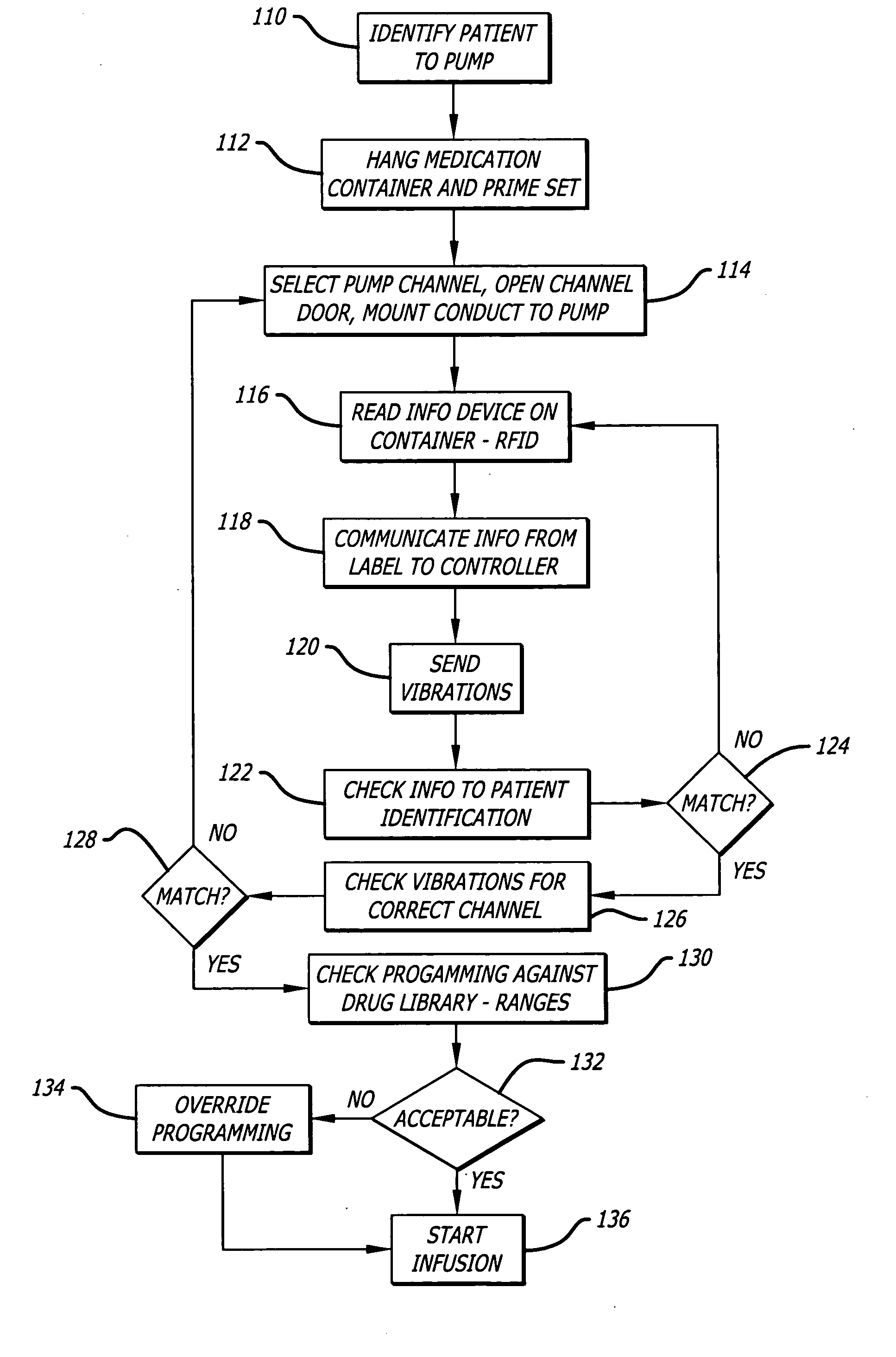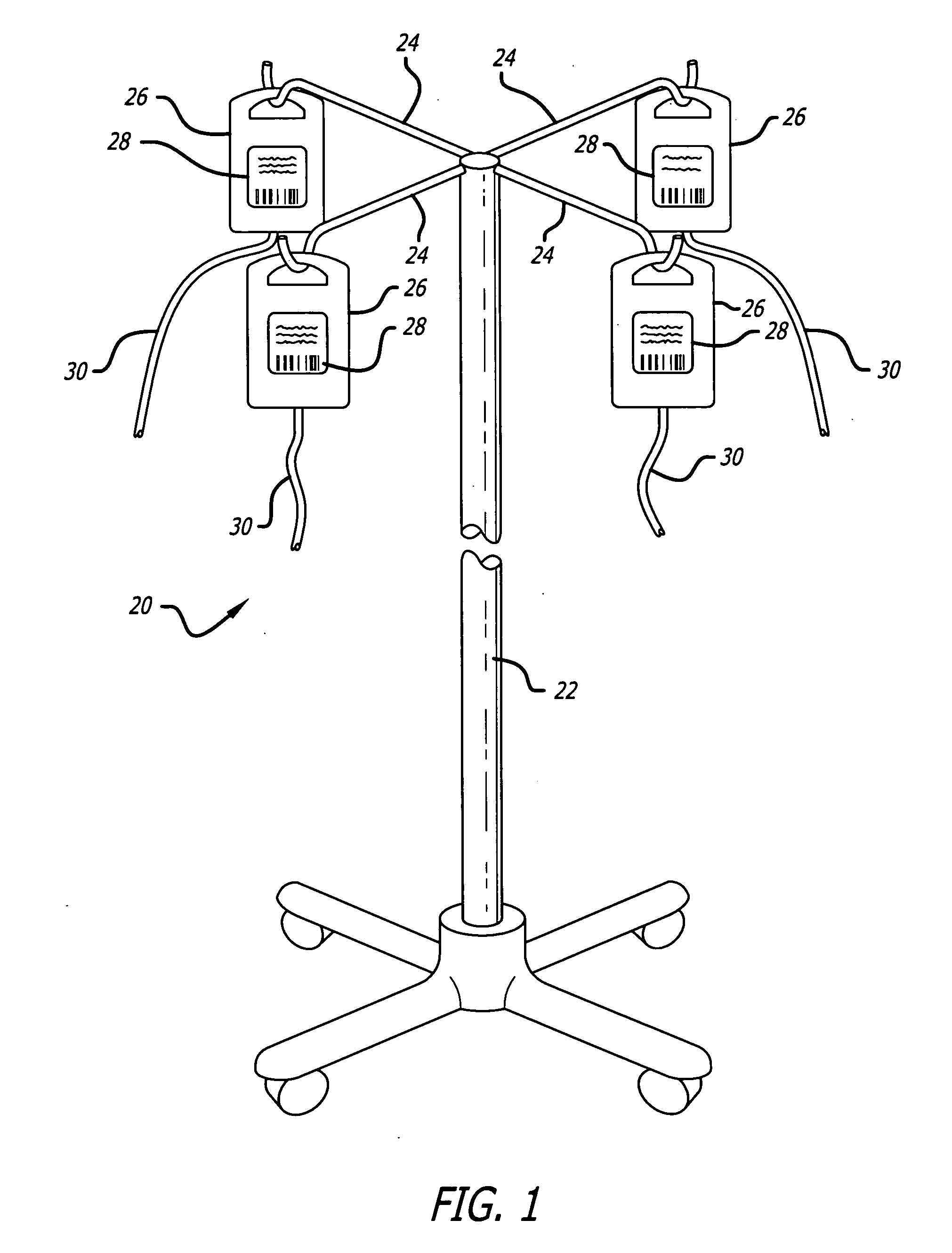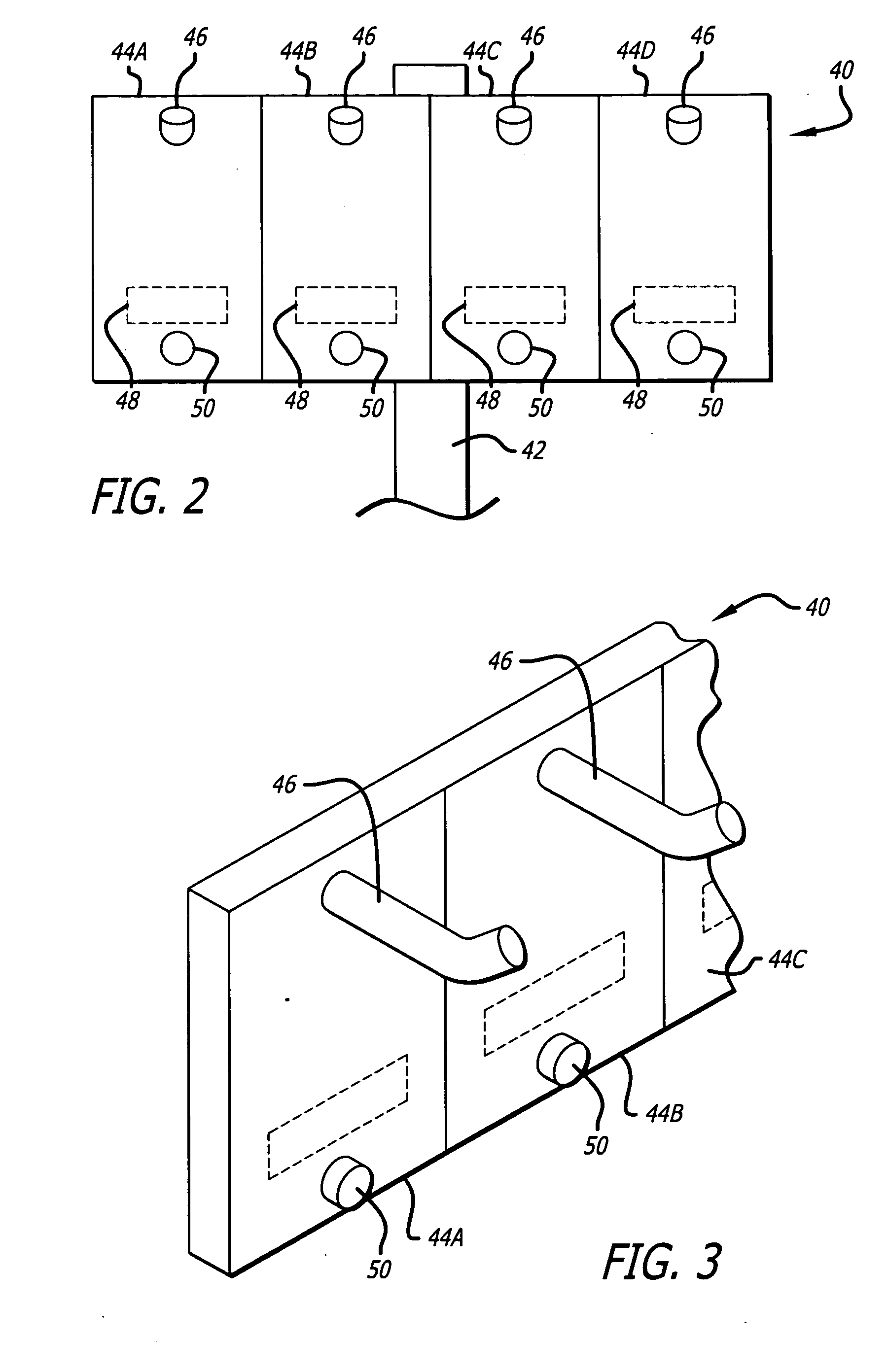Medication safety system featuring a multiplexed RFID interrogator panel
a technology of interrogator panel and medication safety system, which is applied in the field of programing medical devices, can solve the problems of multiple fluid conduits, attendant risk of typing or entering errors, and attendant risk of incorrect data entry, and achieve the effect of not disabling the pump operation
- Summary
- Abstract
- Description
- Claims
- Application Information
AI Technical Summary
Benefits of technology
Problems solved by technology
Method used
Image
Examples
Embodiment Construction
[0036] Referring now in more detail to the drawings in which like reference numerals refer to like or corresponding elements among the several views, there is shown in FIG. 1 an intravenous (“IV”) medication fluid container mounting pole device 20 commonly described as a “coat rack.” The device includes a vertical pole 22 with multiple hanger branches 24 at the top from which articles may be hung. In this case, medication containers 26 would be hung from the hanger branches, the contents of which would be infused to a patient or patients through gravity or with other means such as a volumetric infusion pump (not shown). The pump and patient would be lower than the bags of medication. In using the coat rack with prior systems, information devices 28 on the medication containers would be scanned by a bar code scanner either before the bag is hung on the coat rack or after. This requirement for scanning can cause the problems discussed in the background section to arise. For example, a...
PUM
 Login to View More
Login to View More Abstract
Description
Claims
Application Information
 Login to View More
Login to View More - R&D
- Intellectual Property
- Life Sciences
- Materials
- Tech Scout
- Unparalleled Data Quality
- Higher Quality Content
- 60% Fewer Hallucinations
Browse by: Latest US Patents, China's latest patents, Technical Efficacy Thesaurus, Application Domain, Technology Topic, Popular Technical Reports.
© 2025 PatSnap. All rights reserved.Legal|Privacy policy|Modern Slavery Act Transparency Statement|Sitemap|About US| Contact US: help@patsnap.com



